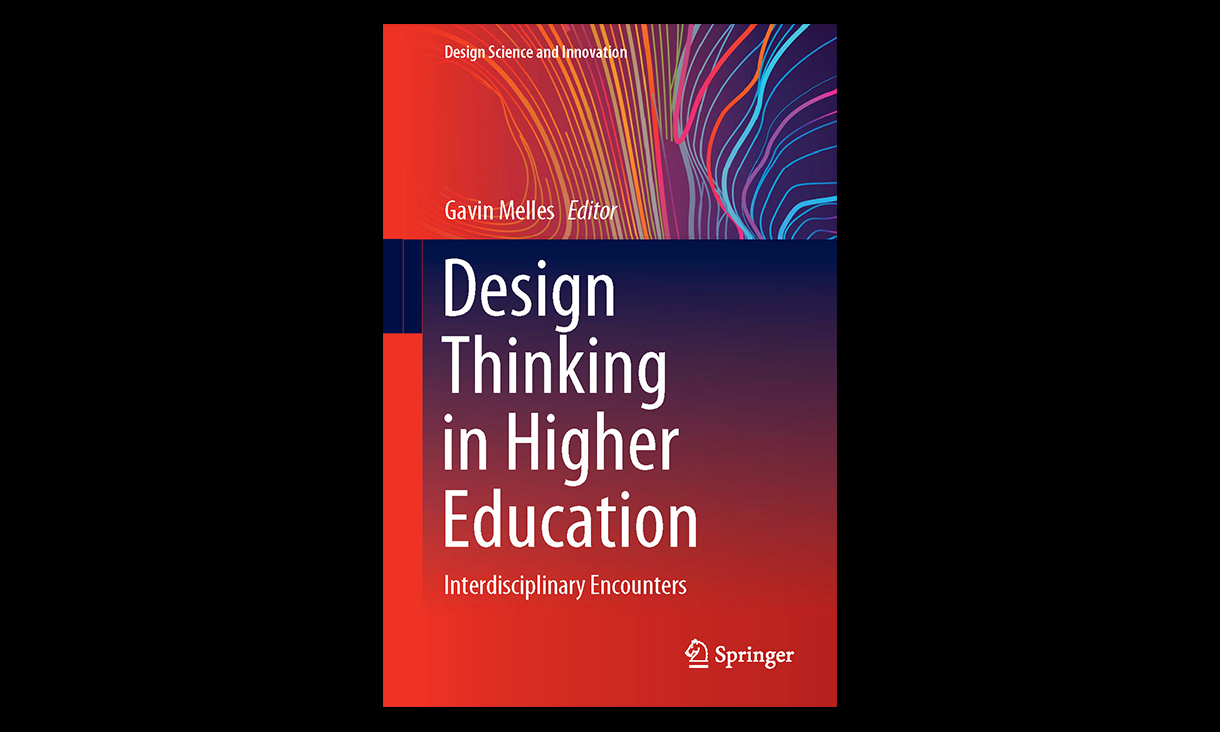Design Thinking in Higher Education

Associate Professor Melles has been teaching design thinking for over ten years in countries such as Australia, India and Germany.
In summary
- Associate Professor of Sustainability and Social Innovation at the Swinburne School of Design, Dr Gavin Melles, addresses developments and concerns about design thinking in higher education
- The text addresses concerns about design thinking integration in the disciplines and the role of higher education
Design Thinking in Higher Education was released in 2020 and author-edited by Gavin Melles, Associate Professor of Sustainability and Social Innovation at the Swinburne School of Design. The book reviews and reflects on design thinking integration in the disciplines and the role higher education plays in its overall development.
“I have been teaching design thinking for over ten years in Australia, India, Germany and elsewhere. Over the last twenty years since its emergence, much has changed, and critique of the approach as a panacea for all kinds of problems has developed. I have over that time learned from and connected with many colleagues, who I invited to write this book with me - Lucy Kimbell from the University of the Arts (London), Sara Beckman from UC Berkeley, Sara Drummond from University of Glasgow and other colleagues in Canada, USA, Germany, Australia, and the UK. This was an opportunity to critically review trends and developments in design thinking and ask what we had learned over the last two decades or so in higher education,” explains Associate Professor Melles.
He says that much has been written about design thinking recommending its uniqueness, potential and effects. While enthusiasm remains, public and academic debate about the present and future of design thinking has emerged. His book tries to position that debate relative to the disciplinary encounters that design thinking has engaged with.
In setting the scene for the book, Associate Professor Melles addresses concerns about its future and addresses practitioners and scholars engaging in various ways with design thinking and asking questions about the complementarity, uniqueness or limitations of different disciplinary approaches to it.
In the introduction to the book, he suggests how discourse analysis may help explain the various stories told about the design thinking movement. The underlying central argument of Design Thinking in Higher Education is about how and whether design thinking might create innovation in higher education.
“Since its popularisation by Stanford D. School and IDEO design agency, design thinking has until recently enjoyed almost unremitting enthusiasm across the globe. Like other terms in public circulation such as sustainability, design thinking is a ‘construct’ with different histories and motivations,” says Associate Professor Melles.
“The term design thinking emerged in a range of discourses about the nature of design - design narrowly and broadly understood. The extent to which the origins and characteristics of these different narratives are adopted by higher education initiatives varies—as specific chapters in my book show,” he says.
“Whether the different narratives coalesce into a coherent debate or conversation about design is unclear. What is clear is that in higher education different forms of the argument have been introduced as a way of transforming and challenging existing pedagogy and practices. In these cases, there are several questions, including what challenges this represents, how successful has it been in scope and scale, and are accounts of its demise accurate?”, Dr Melles asks.
The book, Design Thinking in Higher Education, can be viewed online.
-
Media Enquiries
Related articles
-

- Design
- Astronomy
- Technology
- University
Swinburne ‘Rock Muncher’ takes part in Australian Rover Challenge
A multidisciplinary student team from Swinburne University of Technology competed in the 2024 Australian Rover Challenge held in Adelaide, South Australia.
Thursday 11 April 2024 -

- Design
Swinburne and Scope design accessible USB hubs to improve lives
Swinburne’s Centre for Design Innovation has been researching and designing technology to improve the lives of those living with disability.
Tuesday 02 January 2024 -

- Trades
- University
- Sustainability
Transforming Indigenous housing with future-forward solutions
Swinburne University of Technology has launched a new Indigenous Building Co-Fab initiative. The initiative will tackle housing affordability and sustainability by creating innovative pathways to upskilling communities themselves.
Tuesday 19 December 2023 -

- Design
Young Swinburne designers help build luxury brand
Young Swinburne designers are helping to build the range for a new Melbourne-based luxury product brand, Lood.
Tuesday 31 October 2023 -

- Social Affairs
- Design
Swinburne helps Pasifika youths develop life skills and thrive
Up to 100 Pasifika youths have graduated from Swinburne’s Discovery Sprint program, where young people can gain skills that could kickstart careers in in-demand industries.
Monday 02 October 2023

